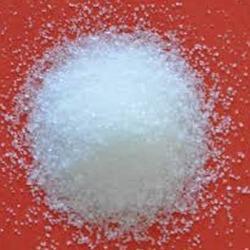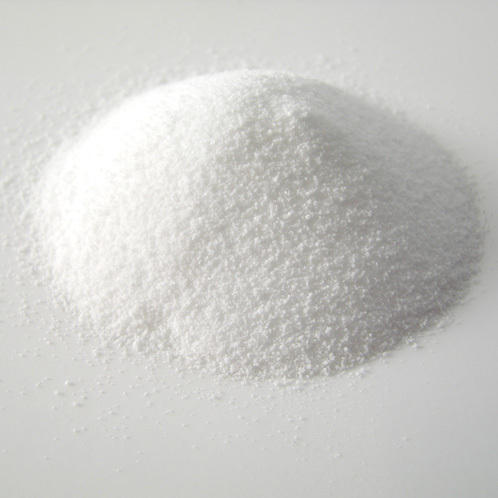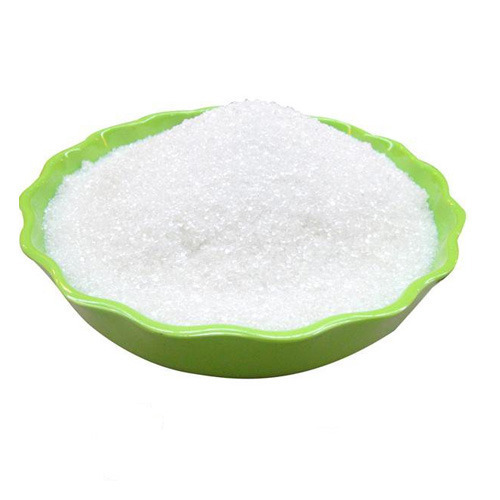Potassium Bromide
350 INR/Kilograms
Product Details:
- Product Type Bromide
- Shape Granules
- Appearance White or almost white, crystalline powder or colourless crystals.
- Solubility Freely soluble in water and in glycerol, slightly soluble in alcohol.
- Molecular Formula KBr
- Molecular Weight 119.002 Grams (g)
- Physical Form Powder
- Click to View more
X
Potassium Bromide Price And Quantity
- 100 , , Kilograms
- 350 INR/Kilograms
Potassium Bromide Product Specifications
- Bromide
- Granules
- White or almost white, crystalline powder or colourless crystals.
- Freely soluble in water and in glycerol, slightly soluble in alcohol.
- KBr
- 119.002 Grams (g)
- Powder
- Odorless
Potassium Bromide Trade Information
- Cash Advance (CA), Cash in Advance (CID), Cheque
- 100 , , Kilograms Kg Per Day
- 1 Week
- Yes
- Free samples are available
- Bag
- Western Europe, Australia, North America, Eastern Europe, Africa, Middle East, South America, Asia, Central America
- All India
Product Description
Potassium Bromide is known to have anticonvulsant property which makes it ideal to be used for treatment of epilepsy in humans and dogs as well. This antiepileptic compound is known to have chemical formula KBr with molecular weight of 119.002 g/mol and high boiling point of 1435 degrees Celsius. It can be prepared by treatment of potassium carbonate with iron bromide under controlled conditions. This chemical appears as white colored solid with odorless nature and density of 2.74 g/cm3. Potassium Bromide shows solubility in ethanol and glycerol with melting point of 734 degrees Celsius. It is also soluble in water and possesses sedative property. Potassium Bromide BPDEFINITION: Content: 98.0 per cent to 100.5 per cent (dried substance).IDENTIFICATION A It gives reaction of bromides.B. Solution S (see Tests) gives the reactions of potassium.TESTS: Solution S: Dissolve 10.0 g in carbon dioxide-free water R prepared from distilled water R and dilute to 100 ml with the same solvent.Acidity or alkalinity: To 10 ml of solution S add 0.1 ml of bromothymol blue solution R1. Not more than 0.5 ml of 0.01 M hydrochloric acid or 0.01 M sodium hydroxide is required to change the colour of the indicator.Bromates: To 10 ml of solution S add 1 ml of starch solution R, 0.1 ml of a 100 g/l solution of potassium iodide and 0.25 ml of 0.5 M sulphuric acid and allow to stand protected from light for 5 min. No blue or violet colour develops.Chlorides: Maximum 0.6 per cent.Iodides: To 5 ml of solution S add 0.15 ml of ferric chloride solution and 2 ml of methylene chloride.Shake and allow to separate. The lower layer is colourless.Sulphates: Maximum 100 ppm.Iron: Maximum 20 ppm.Magnesium and alkaline-earth metals: Maximum 200 ppm, calculated as Ca.Heavy metals: Maximum 10 ppm.Loss on drying: Maximum 1.0 per cent, determined on 1.000 g by drying in an oven at 105C for 3h.Potassium Bromide USP KBr 119.0Potassium Bromide contains not less than 98.0 percent and not more than 100.5 percent of KBr, calculated on the dried basis. It contains no added substances.Appearance of solution: clear and colorless.Test solution Dissolve 10.0 g in carbon dioxide-free water, and dilute with the same solvent to 100 mL.Identification: solution containing 4.5 mg of potassium bromide responds to the test for Bromide.Responds to the test for Potassium.Acidity or alkalinity To 10 mL of the solution prepared for the test for Appearance of solution, add 0.1 mL of bromothymol blue TS: not more than 0.5 mL of 0.01 N hydrochloric acid or 0.01 N sodium hydroxide is required to change the color of this solution.Loss on drying Dry it at 100 to 105 for 3 hours: it loses not more than 1.0% of its weight.BromatesStarchmercuric iodide solution Triturate 1.0 g of soluble starch with 5 mL of water and pour the mixture into 100 mL of boiling water, containing 10 mg of mercuric iodide.Procedure To 10 mL of the solution prepared for the test for Appearance of solution add 1 mL of Starchmercuric iodide solution, 0.1 mL of a 100 g per L solution of potassium iodide, and 0.25 mL of 0.5 M sulfuric acid. Allow to stand protected from light for 5 minutes: no blue or violet color develops.Limit of chlorine: not more than 0.6%.Iodides To 5 ml of the solution prepared for the test for Appearance of solution add 0.15 mL of a 10.5 g per 100 ml ferric chloride solution, and 2 ml of dichloromethane. Shake, and allow to separate. The lower layer is colorless.Sulfates A 2.0-g portion shows no more sulfate than corresponds to 0.2 ml of 0.020 N sulfuric acid (0.01%).Limit of iron: not more than 20 ppm.Magnesium and alkaline-earth metals (0.02%, calculated as Ca).Heavy metals: not more than 10 ppm.Potassium Bromide ACS Analytical ReagentReagent Chemicals ACS Specifications Potassium Bromide KBr Formula Wt 119.00CAS Number 7758-02-3REQUIREMENTS Assay: 99.0% KB rpH of a 5% solution: 5.0-8.8 at 25CMAXIMUM ALLOWABLE Insoluble matter: 0.005% Bromate (BrO3): 0.001%Iodate (IO3): 0.001%Chloride (Cl): 0.2%Iodide (I): 0.001%Nitrogen compounds (as N): 0.005% Sulfate (SO4): 0.005%Barium (Ba): 0.002% Heavy metals (as Pb): 5 ppmIron (Fe): 5 ppm Calcium (Ca): 0.002%Magnesium (Mg): 0.001%Sodium (Na): 0.02%FAQs of Potassium Bromide:
Q: What is the physical appearance of Potassium Bromide?
A: Potassium Bromide appears as a white or almost white, crystalline powder or colourless crystals.Q: What is the molecular formula and molecular weight of Potassium Bromide?
A: The molecular formula of Potassium Bromide is KBr, and its molecular weight is 119.002 grams (g).Q: Is Potassium Bromide freely soluble in water?
A: Yes, Potassium Bromide is freely soluble in water and in glycerol.Q: Does Potassium Bromide have a distinct odor?
A: No, Potassium Bromide is odorless.Q: What is the physical form and shape of Potassium Bromide?
A: Potassium Bromide is available in powder form and typically has a granular shape.Tell us about your requirement

Price:
Quantity
Select Unit
- 50
- 100
- 200
- 250
- 500
- 1000+
Additional detail
Mobile number
Email
Other Products in 'Fluoride Powder' category
 |
PARTH INDUSTRIES
All Rights Reserved.(Terms of Use) Developed and Managed by Infocom Network Private Limited. |







